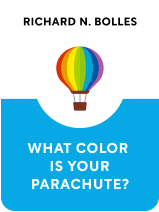

This article is an excerpt from the Shortform book guide to "What Color Is Your Parachute?" by Richard N. Bolles. Shortform has the world's best summaries and analyses of books you should be reading.
Like this article? Sign up for a free trial here .
Do you know what to do before an interview? How should you prepare?
If you want to know what to do before an interview, What Color Is Your Parachute? can help. There are certain things that are critical for what to know before an interview.
Keep reading for some tips about what to do before an interview from What Color Is Your Parachute?
What to Do Before an Interview
There are four things that are what to do before the interview:
1. Research the organization. Employers are interested in how much you know about them, so if you come into interviews with a good handle on what the organization does and values, employers will be impressed and flattered. Read the about page and press releases on their website, look for a file on the company at the library, and conduct informational interviews to learn about the company.
2. Test-run technology. If your interview is via video chat such as Skype, practice using the chat software with a friend to sort out technical hiccups and any issues with how you come across on camera.
3. Prepare samples. Bring relevant samples of work you’ve completed in the past, so preparing them is what to do before an interview.
- For example, if you’re a graphic designer, you might bring in some books you’ve laid out.
4. Prepare a list of general skills. No matter what kind of job you’re applying for (or trying to get created for you), there are some general skills that all employers want, such as dependability, commitment, and trainability. What to do before the interview is make a list of these types of skills and an experience in which you’ve demonstrated that skill.
Summarize
In this step, you’re going to summarize all the wide-ranging online information about yourself into a resume. Having this information committed to memory is essential for what to know before an interview. Here are the steps:
1. Brainstorm a list of all your skills, experiences, and so on. Be as quantitative as possible. Consider the following brainstorming questions for what to know before an interview:
- Where did you go to school, did you receive scholarships, good grades, and so on?
- Have you ever volunteered, done unpaid work, or completed an internship?
- If you’ve worked in sales, what were some of your accomplishments?
- If you’ve worked in customer service or administration, what were some of your accomplishments?
- If you’ve ever planned an event, what were your accomplishments?
- What are your skills with technology?
- Do you have any mechanical skills?
- Do you have any trade skills, such as electrical, plumbing, and so on?
- Have you ever led a team or trained anyone?
- How long have you worked in certain industries?
- In any situation, when have you held responsibility? How did you handle it?
- Were you ever promoted or given more authority?
- Have you ever done things outside of your job description, either because you were asked to or because you volunteered?
- How could you contribute to a company and how could you contribute more than your competitors could?
- What positive feedback have you received? Consider customer praise, performance reviews, and awards.
- Do you belong to any committees or clubs?
- Have you published or presented anything?
2. Choose a professional format. Some industries expect to see certain conventions in a resume, but for the most part, there are no hard and fast rules for resume formatting. What to do before an interview is pick.w Here are four options:
- Reverse chronological order. In this format, divide your resume into sections such as experience and education, and then place the information in order of newest to oldest. This is the most common format and is advantageous when you have a lot of experience or skills related to the job. It’s disadvantageous when your most recent activities aren’t related to the job.
- Skill-focused. In this format, divide your resume into sections based on skills and then file relevant experience and organization under each skill. This format is advantageous when you have skills rather than experience that are related to the job. This format is often used by those with gaps in their resumes, so be prepared to address that in an interview.
- Combo. In this format, combine the reverse and skill-focused formats. Divide the material into categories based on skills and then put the specifics in reverse chronological order. This format is overall most advantageous and works particularly well when you want to highlight non-recent relevant experience.
- Original. In this format, be creative. Use images and design elements such as fancy typography. This format is most appropriate for creative jobs because it demonstrates visual arts skills. However, remember that creativity is subjective, so a resume that appeals to one employer might not to another.
3. Write the contents of your resume. There are some dos and don’ts:
Dos:
- Use correct spelling and grammar.
- Translate jargon into layperson’s language.
- Use your resume to describe your experience in a way that’s most relevant to the job you’re applying for.
- Be clear and up-front about your strengths.
- Include numbers when possible, for example, how much you sold.
- Use keywords. There’s a keywording resource here.
- Make sure to include your contact information, including your name, phone number, email, city and state if relevant, and LinkedIn profile.
- Include scholarships, awards, and so on. Only include your GPA if it’s 3.0 or higher.
- If you like, you can include an objective, a summary of experience, and hobbies/interests.
Don’ts:
- Don’t use qualitative phrases such as “hardworking.” Cover facts.
- Don’t include any information about your children, marital status, and so on.
- Don’t mention non-obvious or nonvisible disabilities in a resume (in general).
- Don’t give references. You can give employers references after the first interview. Make sure to ask references for their permission, and if they’re writing a letter, read it first.
- Don’t explain complicated situations. If you’re considering including something that’s hard to explain on paper (such as why you left your last job), leave it out. The only purpose of a resume is to get you an interview. You can discuss more complicated things in the interview.
4. Post your resume publically. You can post your resume on major job boards such as Monster or on specific companies’ websites. (Unfortunately, many companies don’t look at resumes posted on their sites.)
- Don’t include any information that would allow someone to find out where you live or work.
5. Send your resume to specific postings or employers.
- Customize your resume for each position you apply for.
- There’s most competition on major job boards such as Indeed (employers typically receive 219 applications) and least competition if you can get your resume to an employer via referral (typically 10 applications).
- In addition, or instead of, a resume, you might write a cover letter or put together a portfolio.
- If you’re sending your resume to specific employers by email, also send a paper copy in case the employer has a policy against opening attachments. When sending your hard copy, use paper that’s at least 28 pounds. Employers only spend about eight seconds per resume, and the feel of the paper will make you stand out.

———End of Preview———
Like what you just read? Read the rest of the world's best book summary and analysis of Richard N. Bolles's "What Color Is Your Parachute?" at Shortform .
Here's what you'll find in our full What Color Is Your Parachute? summary :
- How to not just find a job, but find a job you love
- Why traditional resumes don’t find you the right job
- The 7 steps to identifying your ideal career






